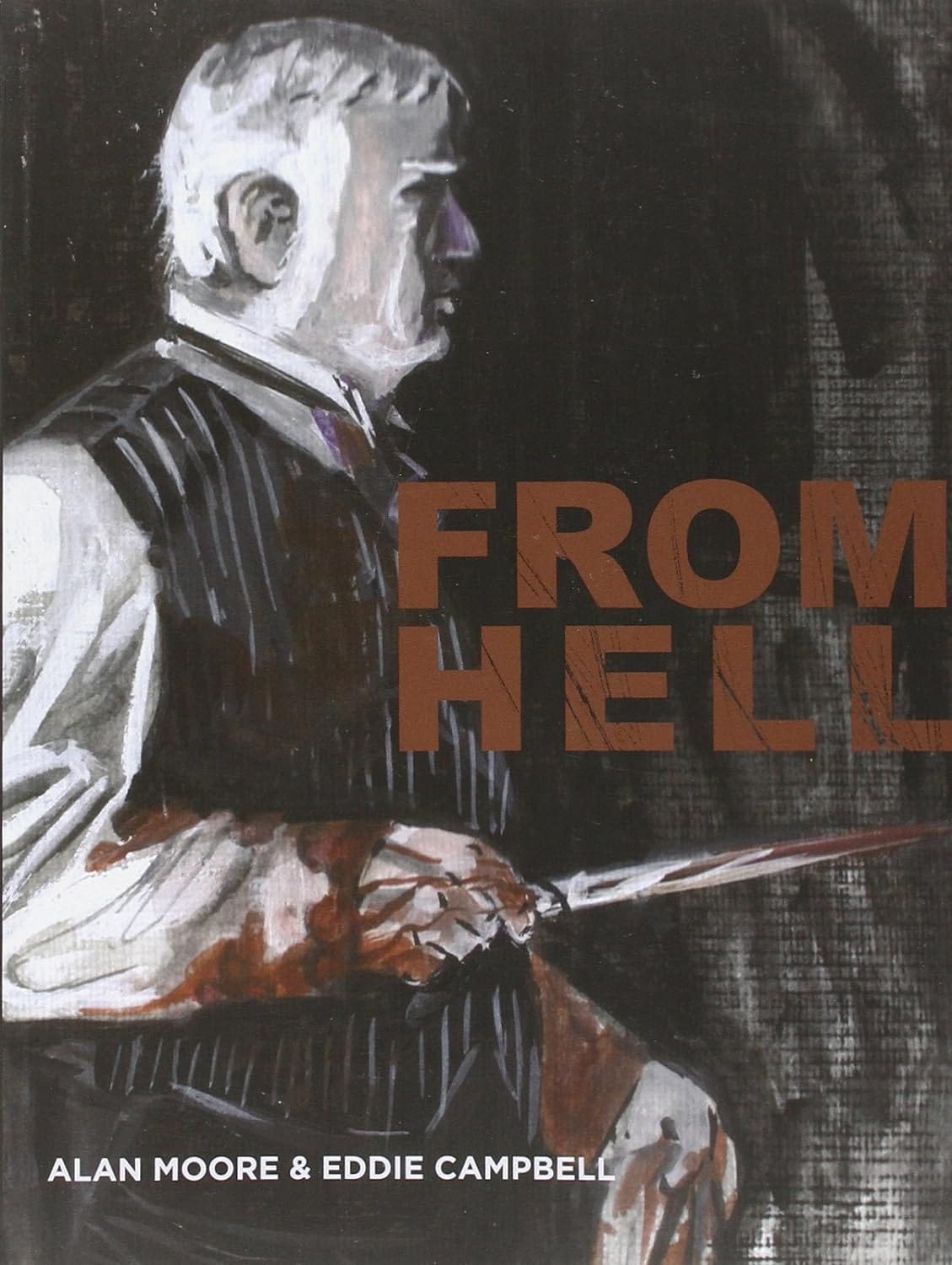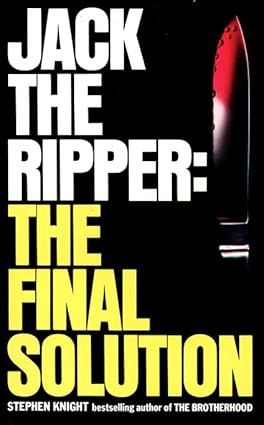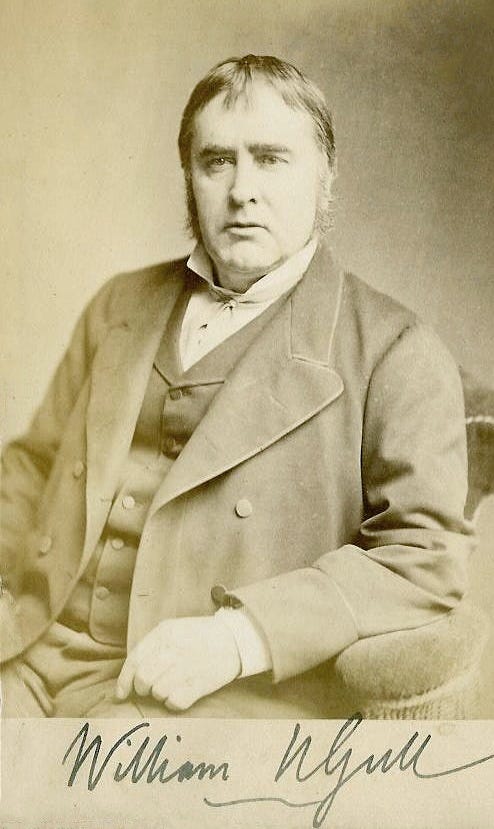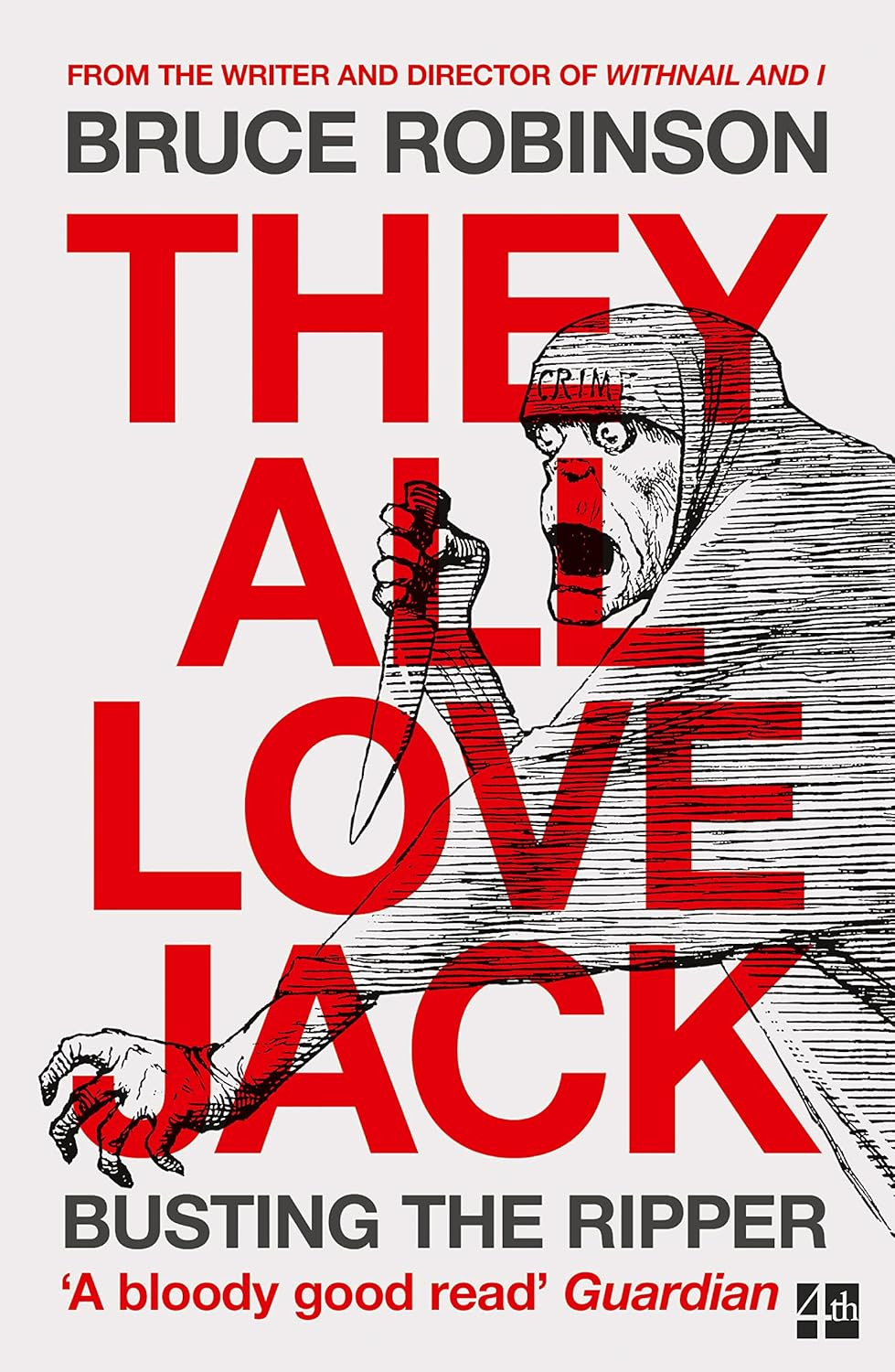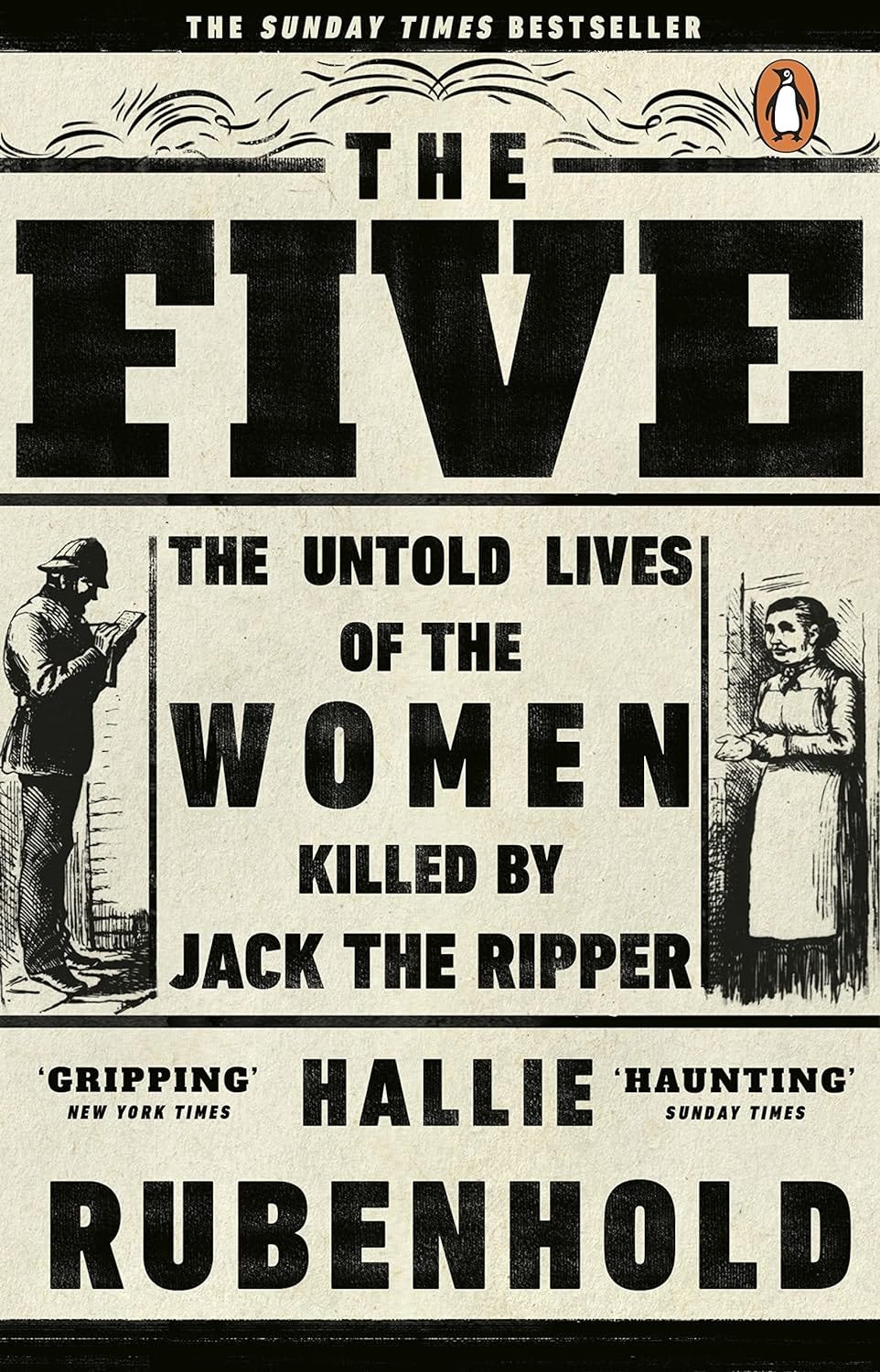Inspired by a chance conversation on a WhatsApp group and then its synchronistic appearance on one of my favourite podcasts (the always excellent Weird Studies), I read Alan Moore and Eddie Campbell’s From Hell recently. I had been aware of it, and even felt familiar with it, and must’ve read some of it, since it was first published in book form in 1999, but I realised that I had never actually read the whole thing. So I did. In the 1990s it would have dazzled me, with both its sinister transgressive subject matter and also the pyrotechnical psychogeography and Moore’s occult fluency. But now, psychogeography has become a tired cliché, and I am a middle-aged man who flinches at sinister transgression rather than is thrilled by it—I usually even find myself responding with moral revulsion, even when it’s ‘just’ art. Or rather, and as here, artistic license taken with real history; particularly the real history of crimes, of tragedies and horrors with real victims and real perpetrators. Moore plays fast and loose with history in From Hell, and the historical victims are little more than grist to his creative mill. They are even—to a certain extent—depicted as bringing their own murders upon themselves by attempting to blackmail the Queen. It sounds preposterous as I type it, and it is, and also repellent in a way that likely wouldn’t have hit me had I read it when it was originally published. The Ripper is a real historical figure, Sir William Gull, who has been tasked by HRH to rid her of the turbulent prostitutes, threatening to expose a scandal that will shake the monarchy. Gull oversteps his brief by carrying out the murders so as to perform an elaborate ‘Masonic’ ritual that will shore up establishment patriarchy for centuries to come. Much of this has been lifted from Stephen Knight’s The Final Solution (1976), which postulated that an elaborate conspiracy between the throne and the Freemasons was behind the Whitechapel murders. Moore adds his own metaphysical meta-narrative. removing any pretence of realism.
A recent book, The Craft, by John Dickie (whose excellent Cosa Nostra I would also very much recommend) does a superb job in cutting through the fog of such misinformation that Freemasonry has accreted pretty much since its inception. The fraternity is of course partly responsible for this itself: as Dickie explains, mystagoguery and obfuscation are an intentional component of its appeal, and disguise and glamorise what is in essence little more than enlightenment rationalism and philanthropic activity, undertaken in a neutral space free from the burdens of the British class system; ‘Masons will point out that the reason they wear gloves in their ceremonies is so that no Brother can tell the difference between the hands of a Duke and the hands of a dustman’ (Dickie, p.13). They were, and still are, of course specifically and unapologetically male spaces and Dickie discusses the reasons for this in some detail. The excuses given historically range between those based on contemporaneous social norms and more specious concerns about a female presence disrupting fraternal harmony. Getting disgracefully drunk free from spousal remonstrance seems to be the not-very-well-disguised bottom line. Dickie also provides a good amount of detail on the hostility that Masonry has attracted over the centuries, famously being a target of suppression by Catholics, Communists, Nazis, Islamists, and pretty much any authoritarian power you can think of that didn’t want groups of men meeting in private and free from their scrutiny. The repulsive forgery The Protocols of the Elders of Zion, cooked up in Russia in 1903, popularised the Jewish-Masonic conspiracy theory that still acts as a demented lodestar to crackpots and cranks of all persuasions, bonded only by their bigotry and credulity. On the wave of tabloid suspicion generated in part by the popularity of Stephen Knight’s book, the Freemasons were even denounced in Parliament in 1983 by one Jeremy Corbyn MP:
Many of us are gravely suspicious about the influence of Freemasonry. I am utterly opposed to it and to the influence of other secret organisations because I believe them to be a deeply corrupting influence on society … Masonic influence is serious … I am suggesting that the power of a Masonic Lodge on any organisation is sinister and insidious. (quoted in Dickie, p. 408)
As Dickie writes, the ‘strongest evidence of Masonic foul play that Knight had to offer was the United Grand Lodge’s refusal to dignify his allegations with a reply’ (p. 409). Moore has the considerable advantage over Knight in that he has never pretended that he was writing anything other than fiction. What is strongly implicit in the text, however, is that Moore believes he has a moral authority to denounce the Victorian ‘establishment’ and hold it collectively responsible for the murders. It is written as though it has a moral truth if not a historical one, and that is what I would like to take issue with here.
There are the obvious objections—primarily that Sir William Gull was clearly blameless. He has no ‘right of reply’ of course—he is long dead, defenceless, and as someone who enjoyed some position of eminence he can be used as a convenient reliquary for Moore’s animus against all eminent Victorians. A quick look on Wikipedia tells us that Gull, around 70 at the time of the murders and quite frail, was a keen advocate for women in medicine, even establishing a woman-only scholarship, and that his research was pioneering in several areas of medicine including women’s health. It doesn’t sit well with me that one can simply pluck someone from the pages of history and accuse them of being a deranged monster indulging in crimes of the most depraved murderous violence, with impunity. Walter Sickert, also present in From Hell, of course gets the same preposterous treatment these days from Patricia Cornwell.
In Bruce Robinson’s They All Love Jack (2015) he too finds his depraved murderer: a composer and light-opera singer called Michael Maybrick. The evidence is entirely circumstantial and, to my mind, entirely unconvincing. They All Love Jack is nevertheless a fascinating read, and the energy of Robinson’s research is formidable. What sticks in the memory, however, is Robinson’s wrath. His fury leaps off every page. He is furious with the incompetence of the investigation. He rubbishes the notion of a conspiracy—specifically a Masonic conspiracy—in the traditional sense, but he is nevertheless apoplectic that the senior figures involved, the eminent public servants, all knew each other and had each other’s backs. He argues that Maybrick was trolling his Masonic network (to what end, he never explains adequately) rather than acting on its behalf. However, Robinson’s wrath is thunderous when he considers the extent of Masonry’s influence and the scope of its membership among the ‘elites’. He positions Freemasonry as an old-boys-network on steroids, that looked after its own, and cared not a jot for disembowelled ‘prostitutes’ in the East End. Like Moore before him, that is the focus of his rage—Moore and Robinson despise the establishment itself and this makes any member of that establishment fair game when it comes to ‘solving’ the Ripper case. Regardless of Gull’s actual blamelessness, he fits this brief as a totem upon which we can hang all the crimes of the eminent Victorians. The ends justify the means.
And why is it the Victorians that elicit such wrath? I have my suspicions; it is partly generational. Moore and Robinson are sons of the counterculture, young adults while the neo-Gothic architecture of Britain was being ripped down boldly around them, replaced by Brutalism and modernist public buildings now derided in their own turn. Moore and Robinson view the Victorians as symbolic of their previous, iniquitous, flag-waving, war-mongering, imperial generation, the influence of which was lingering on and holding back progress and/or revolution. It is impossible to imagine any similar hostility being elicited by, say, the eighteenth or (why not?) fourteenth centuries, as is occasionally still meted out to the Victorians. Anger, embarrassment, and fury concerning the British Empire and its legacy is obviously a central animus; the cliché of the repellent jingoist in the pith helmet with his boot on the ‘native’ neck is inextricably stitched into our perception of Victorian society as a whole. There is also the narcissism of small differences and their chronological proximity, yet even the blood-soaked twentieth century with all its unquantifiable horrors doesn’t attract the same scorn and derision that the Victorians frequently still provoke.
But the Ripper was nothing to do with any of this. The Ripper crimes weren’t a metaphor. They were the brutal murders of innocent women, their lives torn apart literally. They are not a ‘problem’ to be solved. The murderer cannot now be ‘unmasked’ with a theatrical flourish. Nor are they a means of accessing the injustices of the age and of ‘holding to account’ those in charge at the time. Used in life by men, they are now used again in death. In using the murders in this way, we are using the dead bodies of women in order to rationalise, to explain, to seek justice for our own satisfaction, or pressing them to our own artistic ends. It doesn’t matter who the murderer was; he was a pathetic madman, a vile depraved pervert sadist and misogynist. Whoever the sordid little creep was, if he was capable of coherent thought I’m sure nothing would give him greater satisfaction than the idea that his cultural footprint should’ve persisted for so long. There is nothing useful about those murders; no key to understanding the age—as crimes they were grotesque outliers and the freakish act of an individual. Anything else is a sort of creative pareidolia; we project patterns into the shivering void in an attempt to reassure ourselves that there is some meaning to it all. Ultimately, therefore, From Hell seems self-serving: we might have difficulty in accepting that events of such unfathomable horror can be meaningless – but creating a story, an entertainment, to rationalise them is another form of turning away.
Read The Five: The Untold Lives of the Women Killed by Jack the Ripper by Hallie Rubenhold; it is a sobering corrective.



